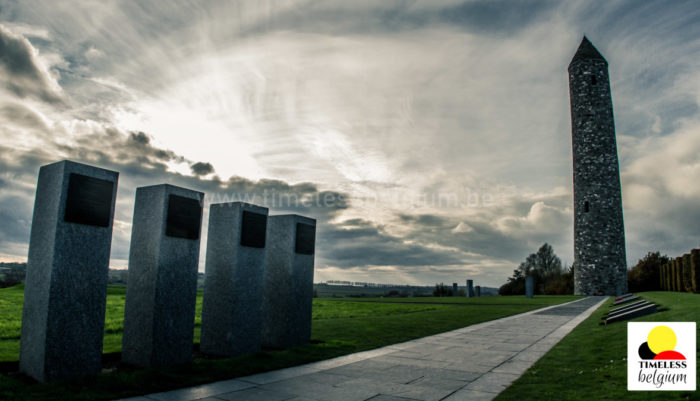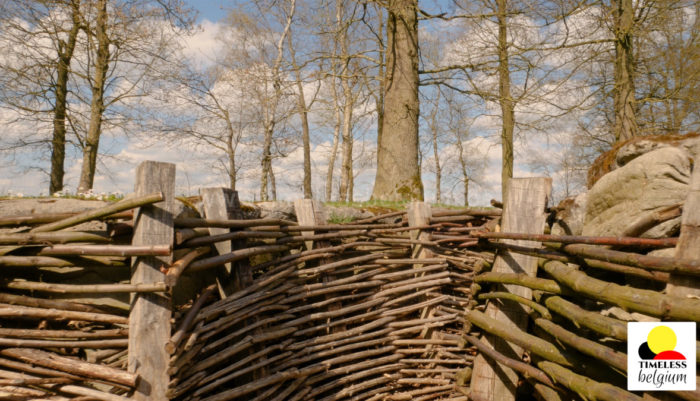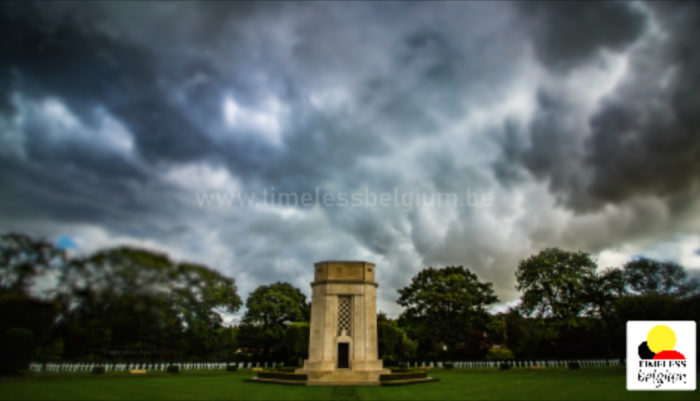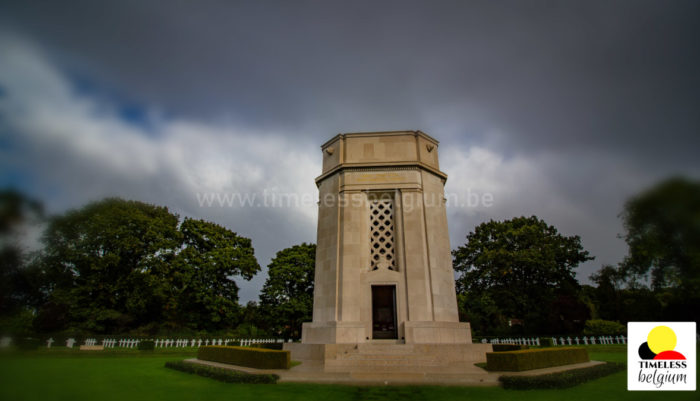World War One Memorial in honour of Albert I king of Belgium, leader of the Belgian Army on the frontline during the battle of Yser River
(Browse the collection : West Flanders Province time lapse and video stock footage)
The King Albert monument was constructed on initiative and with the support of the war veterans of the First World War. The banks of the Ijzer were chosen for it, because of the important role this river played during the war. The memorial dates from 1938 and was designed by Julien de Ridder. Karel Aubroeck is the sculptor. The monument is circular and has a diameter of 30m. Twenty columns made of brick from the Ijzer valley carry a ring girder with a periphery of 100m, above a cross-shaped terrace.
King Albert I is known as the King Soldier. Indeed, during the First World War, from 1914, he took command of the army in the field. After the war, King Albert I ordered very important reforms (positive changes for the people) in Belgium: the introduction of universal suffrage (giving the voting right to all men, regardless of their wealth), the equality of the two national languages and the improvement of working conditions for all.
On the sluice complex stands a monument for the fallen Belgian front soldiers and their commander King Albert I. It was constructed on the initiative and with support of the National War Veterans’ Association in 1938. It was made out of clay dug from the banks of the IJzer river. Here and there are still traces of ordnance in the stones. On top of the monument you can enjoy a panoramic view of the IJzer plains and the city of Nieuwpoort.
File names, codec and sizes | ||
yser02_fhd | yser02_5K+ | yser02_web |
Mov ProRes 422 HQ | Mov ProRes 422 HQ | H264 Mp4 |
221 Mo | 1,8 Go | 12,7 Mo |
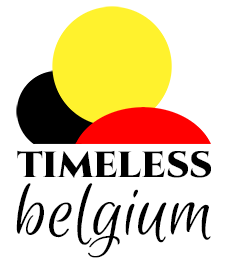
 My Account
My Account 
